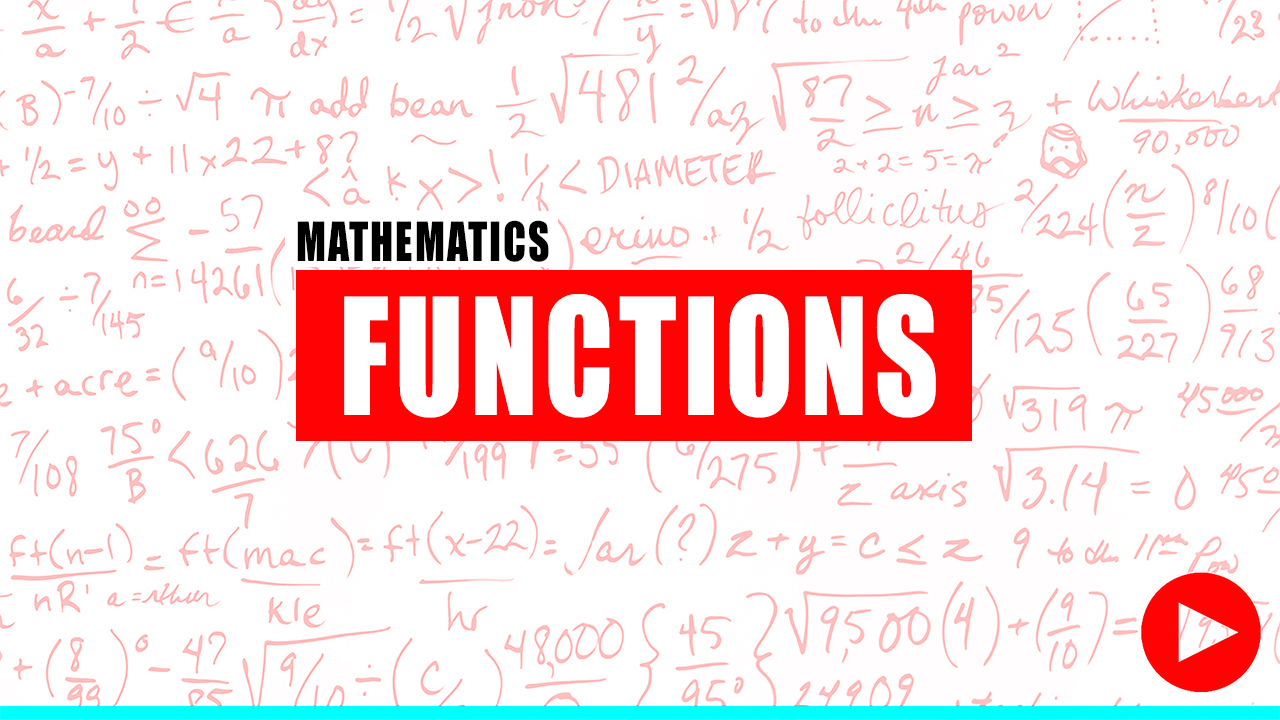In this episode of Engineer In Training Exam TV, Justin walks you through a Fundamentals of Engineering Exam Review of Functions.
The goal is to reinforce both your understanding of functions as well as function notation, two topics commonly encountered on the Engineer In Training Exam.
He will first start with defining a function and function notation, then discuss how to evaluate a function, discuss domain and range, and wrap it up with a discussion on function composition.
This Fundamentals of Engineering Exam Review of Functions is part of the global subject Mathematics.
Having served over 1.5 million lessons in 150 different countries, it’s safe to say we have been in the trenches.
In the trenches working with those who are taking the exam for the first time, either fresh out of college or having taken a few years off from the books.
In the trenches working with those who have already attempted the exam, maybe multiple times, and can’t seem to crack the code.
In the trenches working with those who have been away from the books for ages, from standardized testing for the same amount of time, and can’t fathom taking on this beast of an exam.
And every iteration in between.
Every student’s situation is unique, but the building blocks of what success looks like are always the same.
Click below to register for the FREE myFE Exam Academy Course.
Once you are registered, you’ll get instant access to a proven roadmap, strategies and tactics…
Straight to your email box.
Hey what’s gong on everyone, it’s Justin Dickmeyer from EngineerInTrainingExam.com.
In today’s quick tutorial we are going to present a Fundamentals of Engineering Exam Review of Functions.
We’ll start off by defining a function and function notation, discuss how to evaluate a function, define domain and range and then finish off with function composition.
So let’s start off our Fundamentals of Engineering Exam Review of Functions by defining exactly what a Function is.
An equation will be a function if for any X
in the domain of that equation the
equation will yield exactly one value of
y so the definition criteria for an
equation to be a function is for all X
in that domain there’s only one value of
y so if we can satisfy this with an
equation then that equation is a
function so let’s let’s illustrate that
look at y is equal to x squared plus 1
so is this a function quickly I would
say yes this is a function because given
any X there is only one way to square it
and then add one to the result so no
matter what value of x we plug in here
there’s only going to be one value of y
one value of Y satisfies our criteria so
this is a function let’s look at Y
squared is equal to X plus 1 for the
second equation the only difference is
that we move the exponent off the X and
onto the Y this small change is all that
is required in this case to change the
equation from a function to something
that isn’t a function we can see that
this isn’t a function fairly simply by
plugging in any X let’s just plug in 3
and solve for so Y squared is equal to 3
plus 1 which is equal to 4 let’s solve
for y and we see that it’s going to be
plus or minus 2 that’s two values of Y
it does not satisfy our definition
criteria for function so this is not
this equation is not a function so let’s
talk function notation
function notation is nothing more than
an elaborate way of writing y so from so
let’s look at the equation y is equal to
2x squared minus 5x plus 3 so if we want
to write this equation using function
notation we can substitute the Y as f of
X we can substitute it as G sub X we can
substitute as H of X etc we just plug in
what’s on the right side and that’s
function notation so recall that this is
not some letter say f multiplied by X
it’s just like I said an elaborate way
of writing y using function notation
allows us to represent the value of the
function at a given X within a domain in
a clean and compact way so how do you
evaluate a function let’s take that same
function f of X is equal to 2x squared
minus 5x plus 3 and so what to evaluate
this wherever we see an X on this left
side we plug in whatever X we decide to
plug into the function on the left side
so let’s take f of negative 3 and just
plug it in on the right side it’s that
simple
and then use a math we’ll just go ahead
and quickly solve that just trust me
that it equals 36 so let’s talk about
domain and range this is one of the more
important concepts of a function the
domain of a function is the set of all
values of x all values that can be
plugged into a function and have the
function exist and have a real number
for a value so the domain we need to
avoid anything of division by zero we
need to avoid square roots of negative
numbers logarithms of 0 etc or anything
that makes a function non existent the
range of a function is simply the set of
all possible values that a function can
so let’s quickly find the domain of a
function let’s say we have f of X is
equal to X minus 4 divided by x squared
minus 2x minus 15 so in this case we
want to avoid division by 0 so let’s
isolate x squared minus 2x minus 15 and
since we don’t want it to be a division
by 0 we have to determine what values of
x will make that equal to 0 so let’s set
this function equal to 0 factor it X
minus 5x plus 3 and we can solve that
and see that X is equal to negative 3
and X is equal to 5 so the domain for
this function the domain will be all
values of X except X equal negative 3
and X equal 5
so let’s talk about function composition
let’s say we have two functions f of X
and we have G sub X the function
composition of f of X and G sub X can be
written as f G sub X which is equal to F
with G sub X plugged into that function
so in other words compositions are
evaluated by plugging in the sex second
function which in this case is G sub X
into the first function which is f of X
so let’s look at an example here let’s
take that same composition of F G sub X
and let’s use the equation so let’s say
we have f of X is equal to 3x squared
minus X plus 10 and let’s say we have G
sub X is equal to 1 minus 20 X so all we
need to do is plug G sub X into f of X
so this will equal 3 120 x squared minus
120 X plus 10 so we can solve that out
just trust me that it’s going to come
out to 12,000 12,000 pourtant
interchanging the order will usually
result in a different answer and we can
illustrate that by using the same
functions here let’s use f of X is equal
to 3x squared minus X plus 10 let’s use
G sub X the same one as 1 minus 20x this
time let’s plug f of X and the G sub X
and see what we get
that will come out to be G sub 3 x
squared minus X plus 10 which is equal
to 1 minus 23 x squared minus X plus 10
which is equal to minus 60 x squared
plus 20x minus 199 so to compare that to
the previous example we see that by
interchanging the same functions that
we’ve got two different answers so
that’s all I got for you guys today I
hope you guys enjoyed that quick review
I know it was a fundamental and that you
probably right up on this stuff but I
just wanted to touch briefly on it so
check out my website at engineering
training exam com for more resources and
leadership I look forward to meeting
guys and getting getting to know you and
help you on your journey as you take on
and prepare for the engineering training
exam
—
Follow Prepineer Online Here:
Instagram: https://instagram.com/prepineer
Prepineer Facebook: https://facebook.com/prepineer
EngineerInTrainingExam Facebook: https://www.facebook.com/EngineerInTrainingExam
Snapchat: https://www.snapchat.com/add/prepineer
Website: https://www.Prepineer.com
Website: https://www.EngineerInTrainingExam.com
Twitter: https://twitter.com/prepineer
Passing the FE Exam – Engineering Advice (private Facebook group): https://www.facebook.com/groups/372061059925853/







Leave a Reply